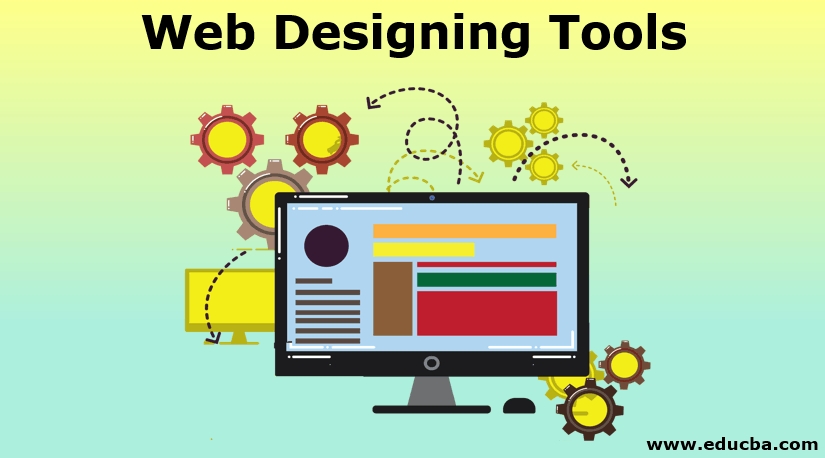Aligned Position Web Design: Building Beautiful and Functional Websites for Your Business
Aligned Position Web Design: Building Beautiful and Functional Websites for Your Business
Blog Article
The Very Best Kinds Of Website Design to Improve Individual Experience and Interaction
In the ever-evolving landscape of digital communication, the efficiency of Web layout considerably influences customer experience and involvement. Different design strategies, such as minimalist, responsive, and interactive formats, each deal unique benefits that can cater to varied user needs.
Minimal Website Design
As digital landscapes come to be progressively cluttered, minimalist website design has emerged as a powerful technique to improving customer experience. This style philosophy focuses on simplicity, focusing on necessary aspects while getting rid of unnecessary disturbances. By making use of sufficient white room, straightforward navigation, and a restricted color palette, minimalist design promotes clarity and directs user focus to crucial content.
The core concept of minimal website design is to create a smooth communication for individuals. By lowering cognitive load, individuals can quickly grasp info without really feeling overwhelmed. This direct method not only boosts functionality yet likewise urges involvement, as visitors are extra likely to check out a website that is visually attractive and easy to browse.
Additionally, minimal style commonly stresses typography and imagery, using these components tactically to share messages effectively. This concentrate on important components can boost brand identity and produce a remarkable individual experience. Basically, minimalist website design is not simply a trend; it is a thoughtful approach that recognizes the importance of user-centered layout. By removing supplementary aspects, developers can develop an extra engaging, effective, and satisfying Web experience for all users.
Responsive Web Design
In today's diverse electronic atmosphere, receptive website design has actually become crucial for creating a seamless individual experience across a plethora of tools. As customers access websites on smart devices, laptop computers, desktops, and tablet computers, the capacity of a website to adjust its design and material to different display sizes and resolutions is critical.
Receptive Web style employs versatile grids, pictures, and CSS media questions to make sure that Web content is offered ideally, no matter the gadget utilized. This technique not only enhances the aesthetic charm of a web site yet also substantially boosts usability. Users are most likely to engage with a site that supplies a constant experience, as it gets rid of the aggravation of needing to focus or scroll exceedingly.
Moreover, online search engine, including Google, prioritize mobile-friendly web sites in search rankings. By embracing responsive style, organizations can improve their visibility and reach a broader audience. This technique likewise simplifies web site maintenance, as a single version of the site can satisfy all devices, lowering the need for multiple versions. In recap, responsive website design is an essential technique that boosts individual experience, interaction, and general fulfillment.
Interactive Website Design
Responsive website design lays the foundation for boosting individual experience, however interactive website design takes this a step further by engaging users in an extra vibrant means - Aligned Position Web Design. By incorporating aspects such as computer animations, clickable models, and real-time feedback, interactive Web style mesmerizes individuals, attracting them right into a richer surfing experience
This approach not only fosters interaction however additionally urges customers to explore content actively rather than passively consuming it. Techniques such as gamification, where users make incentives for finishing jobs, can significantly improve the time invested in a site and enhance general fulfillment. In addition, interactive attributes can streamline intricate details, making it a lot more absorbable and satisfying.

Integrating interactive design aspects can likewise lead to higher conversion prices, as individuals are extra most likely to involve with a website that proactively entails them. Aligned Position Web Design. Ultimately, interactive Web style changes this article user experiences into unforgettable journeys, making sure that site visitors return time after time
Apartment Layout
Defined by its minimalistic approach, flat design highlights simplicity and performance, removing unnecessary components and focusing on essential attributes. This layout ideology focuses on use, making sure that individuals can browse user interfaces easily and effectiveness. By using a clean aesthetic, flat layout eliminates the clutter often located in a lot more luxuriant styles, thus boosting user concentrate on content and performance.
The characteristic of flat design hinges on its use of strong colors, basic typography, and geometric forms. These elements add to a visually enticing user interface that is both contemporary and friendly. Furthermore, level style cultivates a sense of clearness, allowing customers to recognize important actions and details without disturbance.
Furthermore, level design is particularly reliable in receptive Web layout, as its simplicity translates well across numerous gadgets and screen sizes. The lack of elaborate structures and gradients reduces loading times, which is important for preserving customer involvement. As digital landscapes continue to evolve, flat design remains a relevant selection for creating easy to use sites that boost total experience. By focusing on vital attributes, level style not just meets user demands however additionally motivates smooth interaction, making it an essential part of efficient website design techniques.
Flexible Web Design
Adaptive website design personalizes the customer experience by producing multiple repaired layouts customized to various screen dimensions and gadgets. Unlike responsive style, which fluidly adjusts a solitary layout, adaptive style employs unique formats for details breakpoints, making certain ideal discussion on various systems. This technique permits designers to concentrate on the distinct characteristics of each gadget, boosting usability by supplying precisely what individuals require based on their context.
One of the primary advantages of adaptive Web layout is its capacity to enhance lots times and efficiency. By serving customized material and images that fit the customer's device, internet sites can lessen data usage and improve loading rates. This is especially beneficial for users with slower links or limited information plans.

Additionally, adaptive design facilitates a more controlled and consistent branding experience. Given that developers produce multiple formats, they can make sure that the visual components straighten Resources with the brand name's identification across different systems - Aligned Position Web Design. This causes a cohesive user experience, boosting involvement and promoting user retention
Verdict
To conclude, the integration of minimalist, receptive, and interactive Web style concepts considerably improves individual experience and interaction. Minimalist style fosters clearness and emphasis, while responsive layout guarantees flexibility throughout different tools, promoting access. Interactive layout mesmerizes users with vibrant aspects, urging exploration and personalization. Collectively, these layout comes close to contribute to the creation of user-friendly settings that not just improve contentment but additionally drive greater conversion rates, emphasizing their vital significance in modern Web layout strategies.

Minimal design cultivates quality and emphasis, while receptive layout ensures adaptability across various devices, promoting availability. Jointly, these style comes close to add to the description production of straightforward settings that not just boost satisfaction but also drive greater conversion prices, emphasizing their essential relevance in contemporary Web design strategies.
Report this page